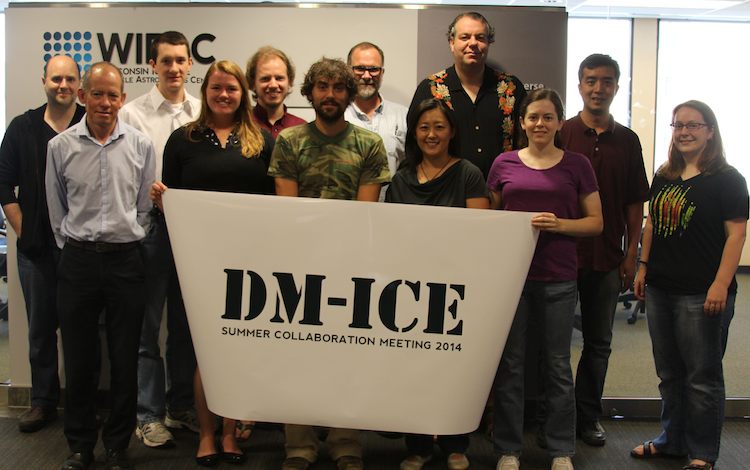
The 2014 annual meeting of the DM-Ice Collaboration, hosted today by WIPAC, brings together a dozen of its members to discuss current status and future development of the dark-matter detector at the South Pole.
The meeting will be led by Professor Reina Maruyama of Yale University, DM-Ice principal investigator and former faculty member at WIPAC. Discussion will focus on the status of DM-Ice, a dark matter detector to be placed in the Antarctic ice. DM-Ice17, the proof of principle for a larger dark-matter detector, will also be discussed. The current detector contains 17 kilograms of NaI crystals housed in two separate assemblies that were deployed at the bottom of two IceCube strings, about 2.5 kilometers deep in the ice.
DM-Ice researchers will be discussing the results of the detector’s performance and will be planning for future R&D of a 250-kilogram detector, called DM-Ice250. Current challenges are the purity of the NaI crystals as well as the deployment location.
Maruyama and collaborators initially envisioned a dark-matter detector in the ice, since it would be the first of its kind in the Southern Hemisphere and deep ice strongly reduces backgrounds both from radioactive isotopes and cosmic rays. DM-Ice250 will play a main role in the international direct detection search for dark matter using NaI crystals, joining experiments such as DAMA, ANAIS, KIMS, and Kamland-PICO. However, the deployment of additional crystals at the South Pole is linked to future extensions of IceCube, which are so far still under discussion. Other scenarios for DM-Ice would include a partial deployment in the Northern Hemisphere or even a full deployment far from the South Pole.
Maruyama also leads the DM-Ice Collaboration, which consists of over 30 researchers from 11 institutions around the world.
